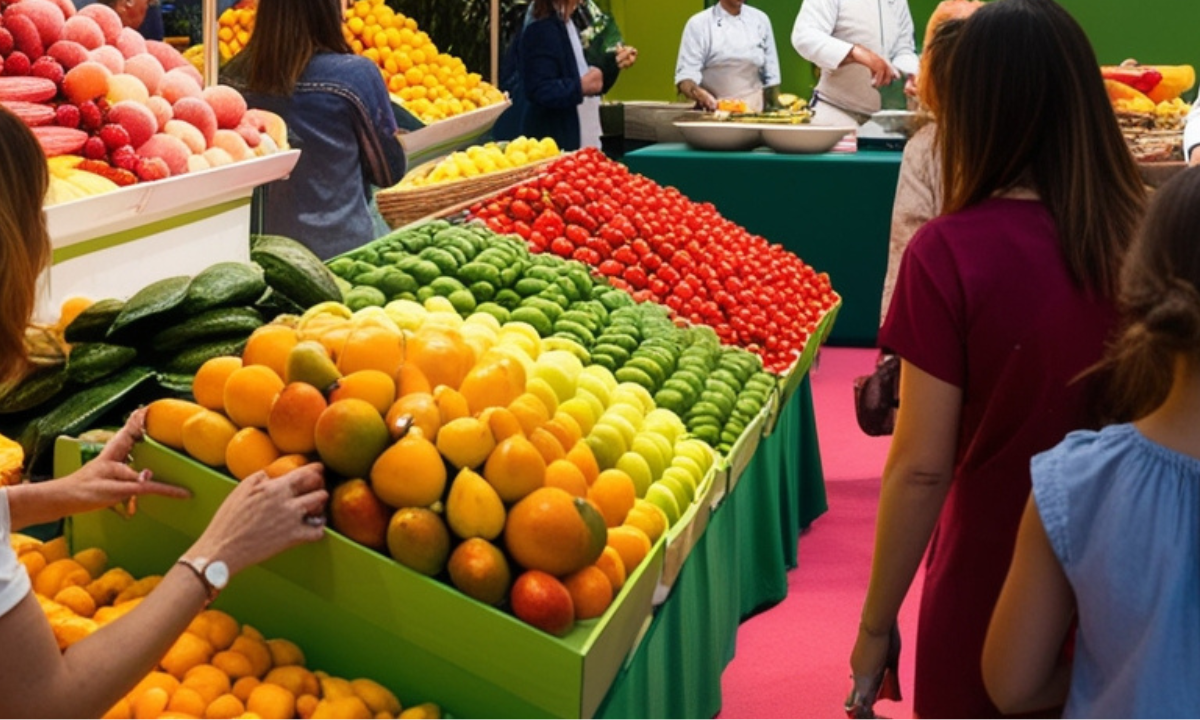British Home Decor Ideas: Stylish British home décor Ideas offer a cozy and classy feel and never go out of style. British interior design’s origins can also be credited to divergent colonization patterns, each of which contributed to the style as we know it today.
British décor is rich in features that allow you to transform your home into any room of your choice stylishly, be it an English cottage, a manor, or a modern home in London. This Tea interested me because it is a complete guide with lots of styles, tips, and specific things so that your Nanny’s British Home décor creates her haven.
You can also read UK Healthy Living Tips
Introduction to British Home Décor Ideas
No British home décor is complete without something traditional or new. A wide range of British interior designs can be observed, extending from the grand English country houses to the chic contemporary flats of London. Common elements in these styles are historicism and concerns for detailed work and warmth. Most British houses appear to be built for occupation, making the rooms devoid of any cold courtesy interior structures like showing some fi, site but not really welcoming.
Key Elements of British Home Décor
- Attention to Detail: All the elements, including furniture and accessory items, are selected correctly so that the general appearance is harmonious.
- Comfort: British homes are filled with soft fabrics, lots of sofas, and many corners to make one feel at home. They have solid ties to the past, with antique pieces, classic fabrics, and all of the building’s traditional elements that are under focus.
- Layering: Brith decors are characterized by offensive and elevated use of harmonies, flashes of color, and designs.
Exploring Different British Décor Styles
English Country House Style
No other interior design may be as expressive or evocative of English culture as the English country house home décor style. This style captures the beauty of living in a country house, complete with its warmth, history, and use of the outdoors.
Colour Palette
The palette mainly comprises warmer colors with softer tones, such as sage green, dusty pink, and light blue. Terracotta ochre’s warm hues often enhance these.
Furniture
Classic, comfortable furniture makes all the difference. By this, we mean soft-upholstered sofas, old wooden tables, or cushions on armchairs. The focus is on furniture that conveys a sense of use.
Textiles
In English countryside décor, layering is necessary, consolidating various beauties that create warmth and hospitality. In this case, a bouquet of wool, silk, and velvet would do just fine to warm it up. Floral designs, checks, and stripes are usual for this style.
Decorative Elements
Accessories such as brass candle holders, ceramic containers with flowers, and handpainted papers add more beauty to these settings. On the other hand, hanhandpaintedtique or heirloom items can be centerpieces of a space instead of being around and complementing the decor.
Modern British Décor with a Twist
Colour Palette
Usually, a neutral color scheme is employed, with grey, white, and black being the predominant colors to give the room a neat, modern feel. To add some color, embrace adorning artwork, throw cushions, and the like.
Furniture
Sleek, minimalistic furniture is common in modern British design interiors. Soft-touch upholstered furniture, mainly made in soft fabrics like velvet, is also common.
Textiles
Though the minimalistic contemporary style approach to décor requires fewer furnishings, the need to layer is still evident. Use materials such as wool, cashmere, silk, or any other quality weave to bring in texture and warmth.
Decorative Elements
One such style includes the use of statement light fixtures, abstract paintings, features, and sculptural mounds of furniture in the context of modern British houses. Function should follow form when searching for such artifacts.
Key Materials in British Home Décor
- Wood: Wood is used in almost every aspect of British interiors, from the oak floors to the mahogany dining tables. More conventional homes use dark-tinted, polished wood, whereas modern or countryside homes mostly use light pine and oak wood.
- Brass: Even when used sparingly, brass accents, such as brass accent lamps, candlesticks, or handles, can still bring sophistication and warmth to the room.
- Textiles: To reiterate the point made several times before, textiles are essential in British home décor. Most are accented with wool, linen, velvet, or cotton textures.
- Wallpaper: Wallpaper is a very popular item and is often used for finishing work in order to decorate the interior and create patterns. Usually, there are hanhandpaintednaments, florals, or stripey patterns, and for these purposes, the William Morris brand is quite fashionable.
Incorporating Colour in British Home Décor
Colour Ideas for Different Rooms
- Living Room: Gentle colour schemes of sage, muted pink, or pale blue can be soothing. Choose a more dramatic accent color, such as navy or burgundy.
- Bedroom: To achieve peaceful sleep, it is advisable to use neutral colors such as cream, beige, soft grey, etc. Use warmer hues of burnt orange, dark green, or plum.
- Kitchen: The colours normally applied to British kitchens are also rather quiet, for example, ‘dove grey’ or light green. These can be contrasted with dark countertops or bright tiles.
- Bathroom: Dominant colour British bathrooms Phyla and White’s are classic. However, it is possible to introduce bright accents through the use of fabrics and tiles. For instance: navy, emerald, and even soft blush pink.
Using Patterns in British Décor
Floral Patterns: Florals are very English and are present in practically everything, including wallpaper and cushions. Soft, minimalistic patterns give a more conventional feel, whereas big and dramatic flowers lend some edginess to the décor.
Stripes: Stripes come in handy in many applications, including wall coverings and fabric construction. While average-sized stripes make it easy to apply a graphical effect, thin stripes will only create a hint of a pattern.
Checks: Checks synonymous with country cottage design are often liberally used. They can be incorporated into the decoration aspects of the house by being used on pillows and throws.
The Role of Furniture in British Home Décor
Few things can be more important elements in the décor of the British home than furniture which also completes functional tasks. Here are some important furniture items to bear in mind when planning a British-styled interior:
Sofas and Armchairs
A good sofa is likely the most beautiful piece when designing a British lounge. Search no more for elegant models with thick cushions and soft matting. A Chesterfield is a deep-seated upholstered sofa with skirting arms and a tufted backrest—a must for a very British interior. Do not forget about the armchairs—they should also be pleasant to sit in; the back is quite high and contains a lot of padding.
Dining Tables
In most British homes, the dining tables are either rectangular or oval and invariably heavily carved of timber. A Classic farmhouse Dinner Table with a worn-out finish will help render a country feel and is best for all casual settings, while normal ones include more formal dinner tables.
Beds and Headboards
While the furnishings in the bedroom include a wardrobe and a dressing table, all eyes are on the bed. Choose beds that have upholstered headboards to add a modern twist to the décor. If it is a more classic and regal tone that you are after, there are always the most apparent solutions, such as decorative canopy b: decoratives.
They place the final touches, which add life to any space. Other than British home accents and accessories, these areas speak to some extent to history, nature, and art.
Lighting
Lighting is an eternal aspect of interior design, more so in British houses, where different sources of light are incorporated. Table lamps, floor lamps, and sconces are common, and many possess brass or ceramic bases. Pendant lights can also be used, particularly in kitchens or dining areas, and they can be decorative.
Artwork and Mirrors
Art adds the required style to a room; in British interiors, one will likely encounter classical and modern art. Mirrors are another essential tool, and beautiful frames enhance the look of the space.
that enhanceTextiles
Rugs are also essential elements that can enhance the warmth and texture of the place. It is pretty common in British households to come across Persian, kilims, or even simple wool-neutral humdrum rugs. Stacking other individual pieces of fabric, like throws or cushions, also contributes to making a pleasant, comfortable atmosphere.
Decorating Ideas for Specific Rooms
Although we have seen the main components of British-style interior design, let’s understand how to incorporate those ideas into various rooms of the house.
Living Room
This area, often referred to as the living room, also serves as the hub of a British household and is dedicated to leisure as well as socialization. Begin with a relaxing couch, slipcovered in a traditional wool or linen fabric. Place some armchairs and side table close to it to get some more seating space. Throw in some rugs and cushions, and create layers of textures. Include a few optimally chosen accessories, such as brass candle holders, a stylized ceramic jar, and even an antique piece, and you are good to go.
Bedroom
The bedroom should offer comfort and tranquility. The decor colors should be subtle, and the furniture should be soft. The best choice would be to go for a stylized bed with an overstuffed headboard and then dress it with a combination of soft linens and lots of throwing pillows. Complete the interior with a rug, which serves to soften the look of the room, or consider wallpaper or using one of the walls as an accent wall.
Kitchen
Even in Britain, the kitchen is usually the center of the house, mainly where meals are prepared and consumed and socialization takes place. Pick simple yet effective solid wood cupboards and balance them with quartz or granite countertops. Open shelves can be a beautiful accent to your kitchen, and so can light fixtures that hug the island or the dining table.
Bathroom
Now, in the bathroom, choose taps and other sanitary wares commercially available in materials such as porcelain or brass. A vintage touch can be achieved with a freestanding tub, while dreary elements like subway tiles may be countered by vivid ones like wallpapers. Add some more furnishing elements, such as fresh flowers in a vase or scented candles, to make the entire space feel comfortable and totally not bare.
My Opinion
British interior is known for its classic, comforting appearance and historical aspect. Many people are quite fond of English design, let’s say they like the rustic warmth of an English country cottage, the exoticism of British colonial interiors, or modern interpretations of British design. There is always a home décor which will please even the fussiest of us. Paying close attention to the quality of materials, detail elements, color, and texture chloroform balance, you are able to achieve the feeling of warmth, hospitality, and uniqueness in your home.
At the onset of your decoration for home aspect development, you should krememberthat the most important thing in British interior design is to let out yourself, which defines every person. Whether it is a quaint little cottage in the countryside, a high-end apartment in the skyline of a bustling freeway or a house in suburbia, Him, the gentleman with a British touch with all his ideas related to decorating, will help you in converting a is quite an ordinary space in to a stylish and comfortable haven.





